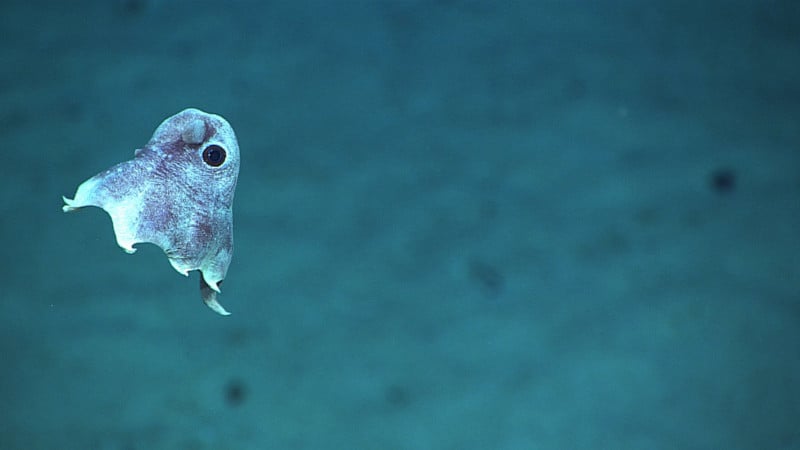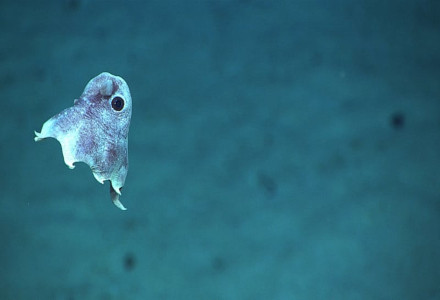
Photo Credit: NOAA Photo Library
CC License: https://bit.ly/1ryPA8o
Dumbo Octopus Facts
- Firstly, Dumbo Octopus serves as the collective common name of octopuses in the genus Grimpoteuthis. The name comes from the over-sized, ear-like fins protruding from the top of the head-like bodies.
- Due to this, many people consider the fins to resemble those of Walt Disney’s popular creation, the flying elephant Dumbo. However, in reality, these serve the entirely different function of swimming.
- The remarkable creature remains the deepest dwelling of all known species of octopus. Quite unfortunately, the amazing animals also rank among the rarest of all known types of octopus.
- But, for the moment, researchers know little about the numbers of the species in this genus. Therefore, the IUCN currently lists all types of Dumbo Octopus as either Least Concern or Data Deficient.
Related Articles
Mimic Octopus Caribbean Reef Octopus
Dumbo Octopus Physical Description
Perhaps most notably, the incredible Dumbo Octopus remains only an average-sized cephalopod. That’s becasue the largest one ever recorded measured 6 feet (1.8 m) in length. It also weighed only 13 pounds (5.9 kg).
However, experts estimate the average size for the various species to be significantly smaller. Rather naturally, characteristics such as size vary among the differing species comprising the genus.
In addition, all known types of Dumbo Octopus display sexual dimorphism. Yet, those differences do not present themselves in terms of size. Among these creatures, males and females differ in their size and sucker patterns.
- Kingdom: Animalia
- Phylum: Mollusca
- Class: Cephalopoda
- Order: Octopoda
- Family: Opisthoteuthidae
- Genus: Grimpoteuthis
Dumbo Octopus Distribution, Habitat, and Ecology
Although experts admit to uncertainty, the Dumbo Octopus appears to have a worldwide distribution. But, within all areas it appears, it displays definite habitat preferences. And quite impressive ones, at that.
That’s because all known species in the group live at extreme ocean depths. Furthermore, most live at depths of as much as 1,800-13,000 ft (3,000-4,000 m). But, some varieties live up to 23,000 ft ( 7,000 m) below sea level.
Also, the majority of sightings appear in the waters of certain regions of the world. These include parts of the east and west coasts of the United States, in North America. Yet, it also lives near Australia, New Guinea, and New Zealand, to name a few places.
The Dumbo Octopus also has a unique hunting strategy for octopi. It hovers over the ocean floor, and preys on various crustaceans, amphipods, and isopods. In turn, however, its own predators include sharks and larger cephalopods.
Species Sharing Its Range
Jawfish Flamboyant Cuttlefish Dugong
Check out our other articles on Breathtaking Asian Species, Kakapo, Jetia Grotto, American Crocodile, Plumed midge-orchid, African Bush Pig, Indian Bullfrog, Western Pygmy Blue

